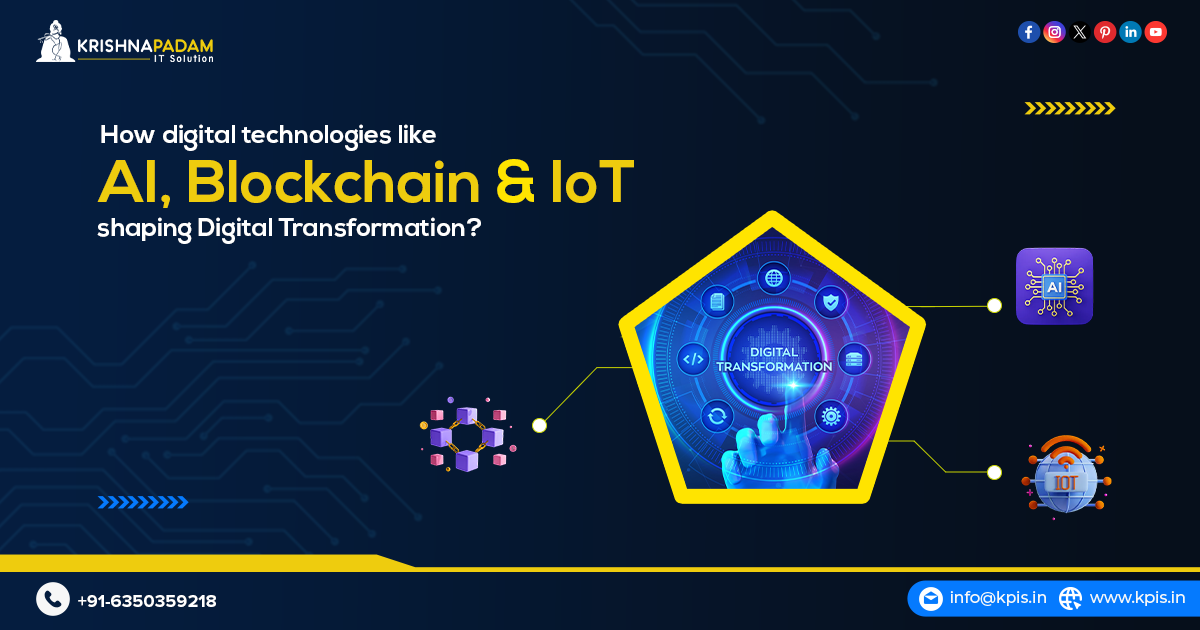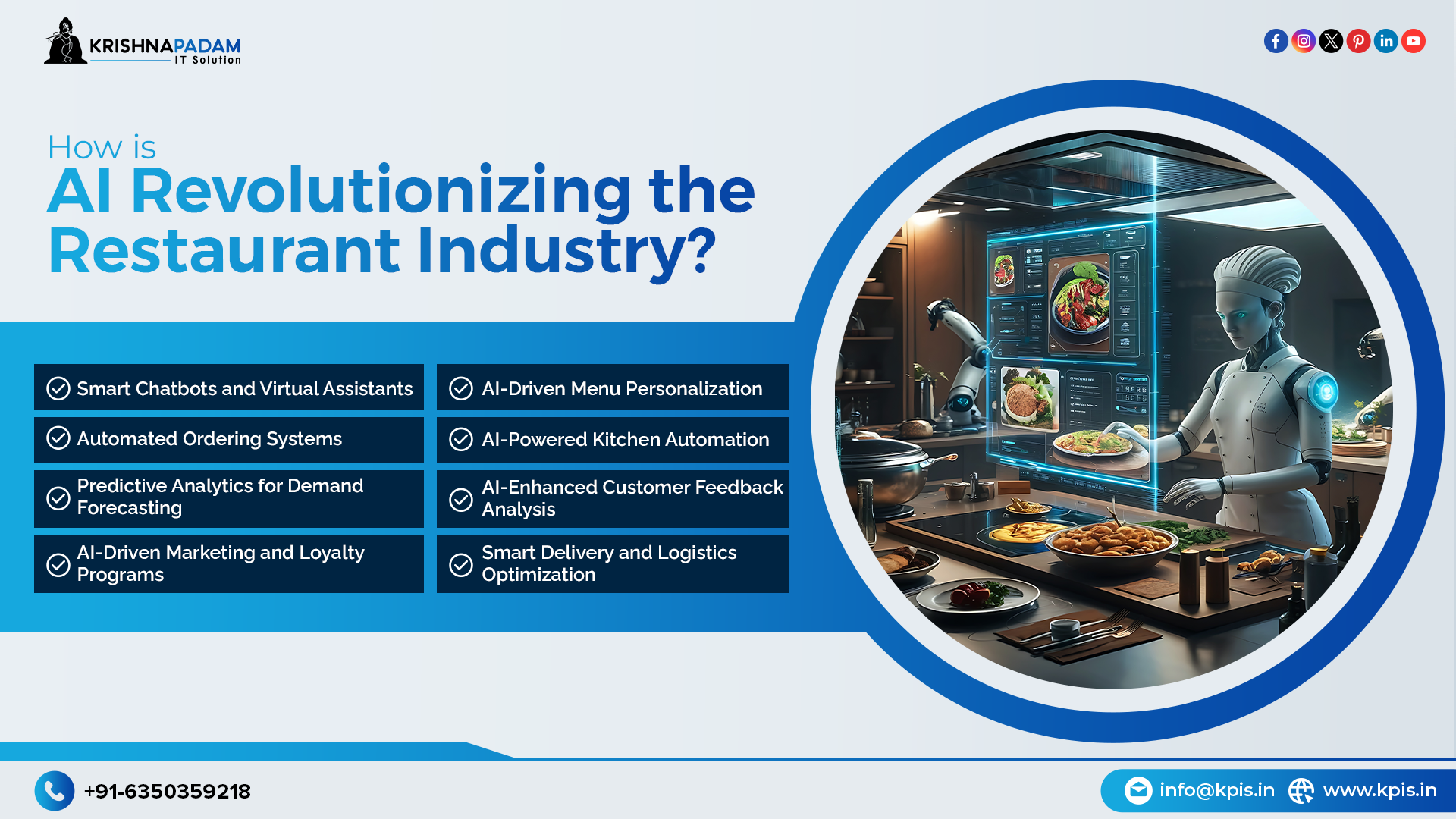Artificial Intelligence (AI) is evolving at an unprecedented pace, and one of its most exciting advancements is Generative AI (Gen AI). From chatbots that write human-like responses to AI-powered design tools that create stunning visuals, Gen AI is revolutionizing the way applications are built and used. If you’re ready to unlock the potential of GenAI for your business, read this Comprehensive Guide to GenAI for 2025: How to Develop Generative AI Solutions. Also, explore what is GenAI | key aspects of AI development, focusing on LLM AI integration, SLM AI development, NLP, machine vision, deep learning, and generative AI solutions.
What is Generative AI?
Generative AI refers to machine learning models that can generate content, including text, images, music, and even code. Unlike traditional AI that follows predefined rules, Gen AI learns from data patterns and creates new, unique outputs. This technology powers applications like ChatGPT, MidJourney, and DALL·E, offering endless possibilities for innovation.
- AI Development:- The process of designing, training, and deploying artificial intelligence models to automate tasks, analyze data, and enhance decision-making across various industries.
- Generative AI Integration:- Embedding generative AI models into applications to automate content creation, enhance user experiences, and generate text, images, audio, and video dynamically.
- LLM AI Integration (Large Language Model AI Integration):- Incorporating large-scale AI models like GPT-4, Llama, or Gemini into applications to enable advanced text generation, conversational AI, and intelligent automation.
- SLM AI Development (Small Language Model AI Development):- Developing lightweight AI models optimized for specific tasks, offering faster processing and reduced computational costs compared to LLMs.
- Natural Language Processing (NLP):- AI-driven language processing that allows machines to understand, interpret, and generate human language, enabling applications like chatbots, voice assistants, and automated translations.
- Machine Learning:- A subset of AI that enables systems to learn from data patterns and improve performance over time without explicit programming.
- Deep Learning:- A subset of machine learning that uses artificial neural networks to model complex patterns, improving AI capabilities in image recognition, speech processing, and generative AI.
- Machine Vision:- AI-powered image and video analysis technology that enables machines to interpret visual data, used in facial recognition, object detection, and autonomous vehicles.
Core Features of GenAI:
- Creative Algorithms:- GenAI models can build unique pieces of content, ranging from human-like text to art and music.
- Learning from Data:- GenAI systems utilize extensive datasets to comprehend context, technique, and structure, allowing them to build readable and innovative outputs.
- Vast Applications:- Above content generation, GenAI models are used in industries varying from healthcare to manufacturing.
GenAI is unique because of its ability to automate innovative processes. Traditionally performed by humans, permitting quicker, better scalable solutions in tech development.
What’s the Difference Between Traditional AI and GenAI?
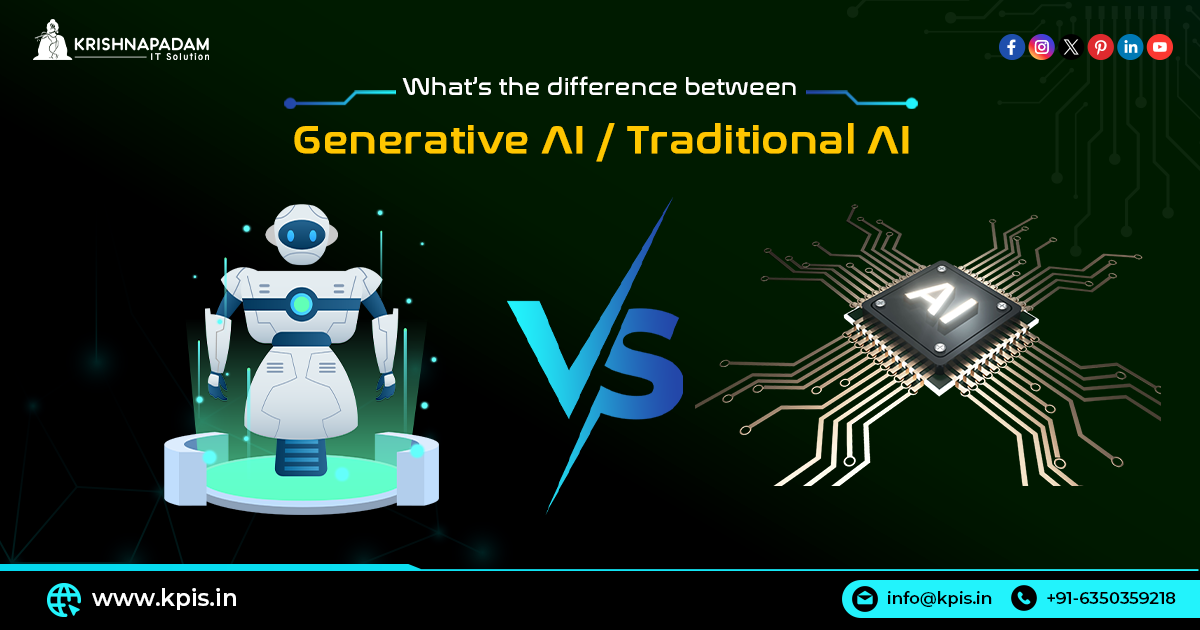
Traditional AI uses machine learning, predetermined rules, and programmed logic to achieve precise assignments. In contrast, generative AI learns from vast datasets to produce content that resembles that of humans. It is the difference between GenAI and traditional AI. For example:
Traditional AI can make ticketing systems more efficient by identifying the customer vision, mission, and language of service demands. Automatically routing them to the right agent based on predetermined standards (expertise, abilities, and availability). Generative AI increases agent productivity by delivering robust writing tools, permitting teams to handle requests more efficiently and offer consistent help.
Industries can manage both traditional and GenAI to analyze data. While Traditional AI can create knowledgeable forecasts based on the data, generative AI can build unique data based on the provided datasets. Generative AI can also adapt to context and deliver impressive, innovative content.
Also, You Can Visit: How Is Artificial Intelligence Transforming Mobile App Development?
Comprehensive Guide to GenAI for 2025: How to Develop Generative AI Solutions?
All sizes of industries, including startups, small companies, mid-sized firms, and enterprises, can use generative AI in various methods. Moreover, businesses may use it to streamline and improve customer support, sales, marketing, IT, development, HR, and training teams. Some examples of GenAI use cases include:
- Improving the current capabilities of customer support representatives with AI-powered assistance
- Analyzing enormous amounts of data for better accurate information scoring and sales forecasting for sales teams
- Personalizing marketing communications
- Optimizing data center operations for IT departments
- Generating code for software developers
- Building and updating internal content and documents for human relations (HR) departments
These generative AI are just the tip of the iceberg. As generative AI becomes more mainstream, companies will find better and more profitable methods to implement the technology.
The Key Technological Foundations Behind Generative AI: Models and Techniques Driving the Change
GenAI is built on various advanced machine-learning models with unique capabilities. The well-known among them are:
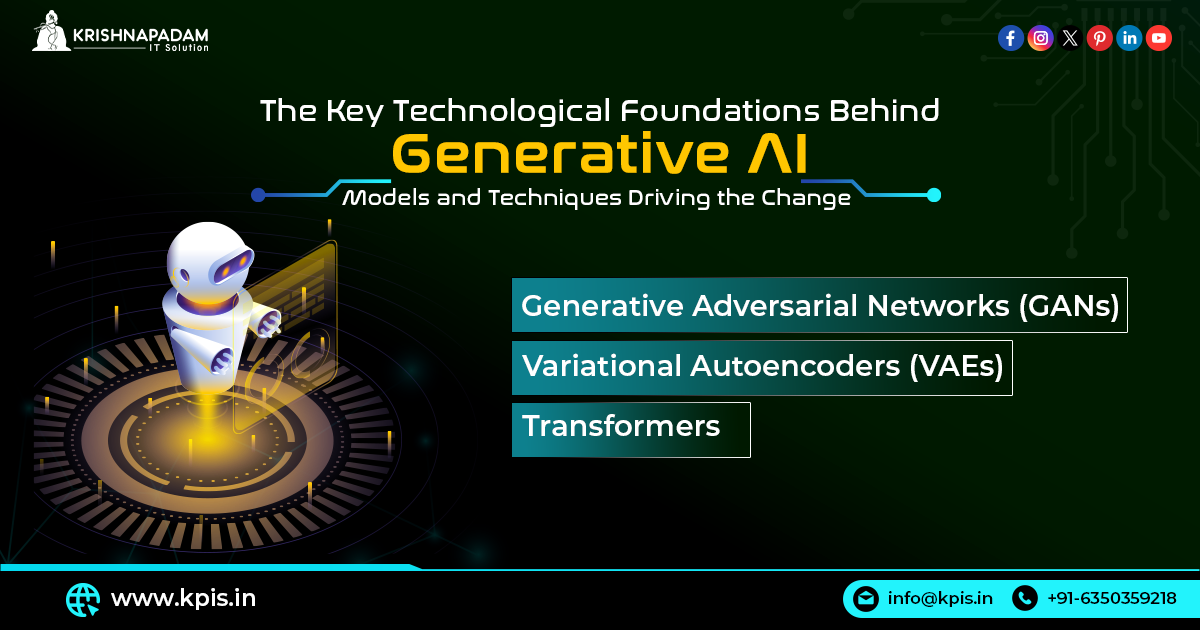
- Generative Adversarial Networks (GANs):- A type of AI model consisting of two networks— a discriminator and a generator. Over time, the discriminator’s assessment of the newly developed data and the generator’s creation of new data, the system’s output is improved.
- Variational Autoencoders (VAEs):- These models compress data into a latent space and then rebuild it, allowing the generation of new data points based on learned representations.
- Transformers:- Transformers, the essential element of many natural language processing (NLP) models such as GPT, use attention mechanisms to understand and build data sequences (e.g., text or code).
These models allow GenAI to power applications that extend beyond traditional AI, pushing boundaries in tech industries such as software development, data analytics, and creative sectors.
How GenAI is Enabling Software Engineers to Build Robust Solutions: From Automation to Innovation
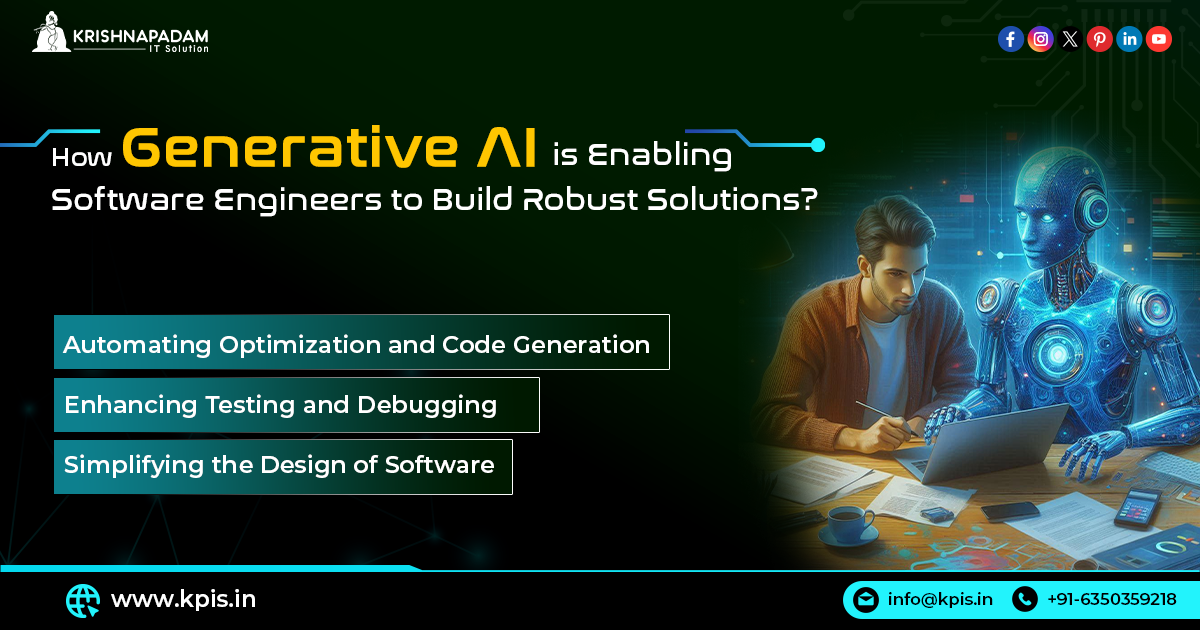
The incorporation of GenAI into software development has led to an ideal change in how applications are developed. Here are a few ways GenAI is impacting tech innovation:
Automating Optimization and Code Generation
- Developers can spend less time writing repetitive code by using GenAI models to make high-quality code snippets. Developers can focus less on ordinary tasks and more on creative problem-solving because of tools like OpenAI’s Codex, which powers GitHub Copilot.
Enhancing Testing and Debugging
- GenAI helps automate software testing by generating test cases, identifying bugs, and improving suggestions. It reduces the time spent on quality assurance, leading to faster deployment of applications.
Simplifying the Design of Software
AI-driven design tools help developers create UIs that are intuitive and easy to use. GenAI may provide design modifications that improve usability and boost the user experience by considering user behaviour and preferences.
How AI Collaboration is Changing Tech Development?
As GenAI becomes more sophisticated, the traditional relationship between human developers and AI is evolving from mere tool usage to true collaboration. Rather than replacing human creativity, GenAI enhances it by acting as a creative partner. The Co-Creative Process:
- Idea Generation:- By producing a multitude of options rapidly, GenAI tools assist developers in coming up with fresh concepts, methods, and solutions.
- Testing and Prototyping:- AI models may simulate and create application prototypes, enabling developers to assess ideas before devoting time and funds to more extensive work.
- Problem-Solving:- Developers can utilize GenAI to find creative solutions that might not be obvious through conventional methods because AI can examine large amounts of data.
This partnership between humans and AI is unlocking new levels of innovation, enabling teams to create smarter, faster, and more efficient applications. Teams can design apps that are smarter, faster, and more efficient because of the collaboration between humans and AI, which is unlocking new creative possibilities.
Ethical Challenges and Difficulties: Handling GenAI’s Effects on Employment, Bias, and Privacy
With the tremendous possibility of GenAI comes responsibility. As the technology grows more robust, several ethical and societal challenges need to be addressed:
Bias in AI Models
- GenAI models learn from data, which can sometimes contain biases. If not carefully managed, AI-generated content has the potential to propagate undesirable stereotypes and unintentional biases, which could negatively affect society at large as well as the IT sector.
Privacy Considerations
- The privacy and security of data are becoming increasingly essential because GenAI models need immense volumes of data to function effectively. To prevent data breaches or misuse, developers must ensure that AI systems are designed with data privacy as a top priority.
Impact on Employment
- The automation capabilities of GenAI boost concerns about the probable displacement of employment, especially in industries where creative jobs like design or content generation are essential. However, the technology also has the potential to develop new jobs focused on organizing, improving, and collaborating with AI systems.
Future Trends in GenAI: What to Expect as the Tech Development Industry Continues to Be Shaped by Generative AI?
The future of GenAI is filled with thrilling possibilities. As the technology continues to develop, here are some trends that will likely define its impact on the tech development industry:
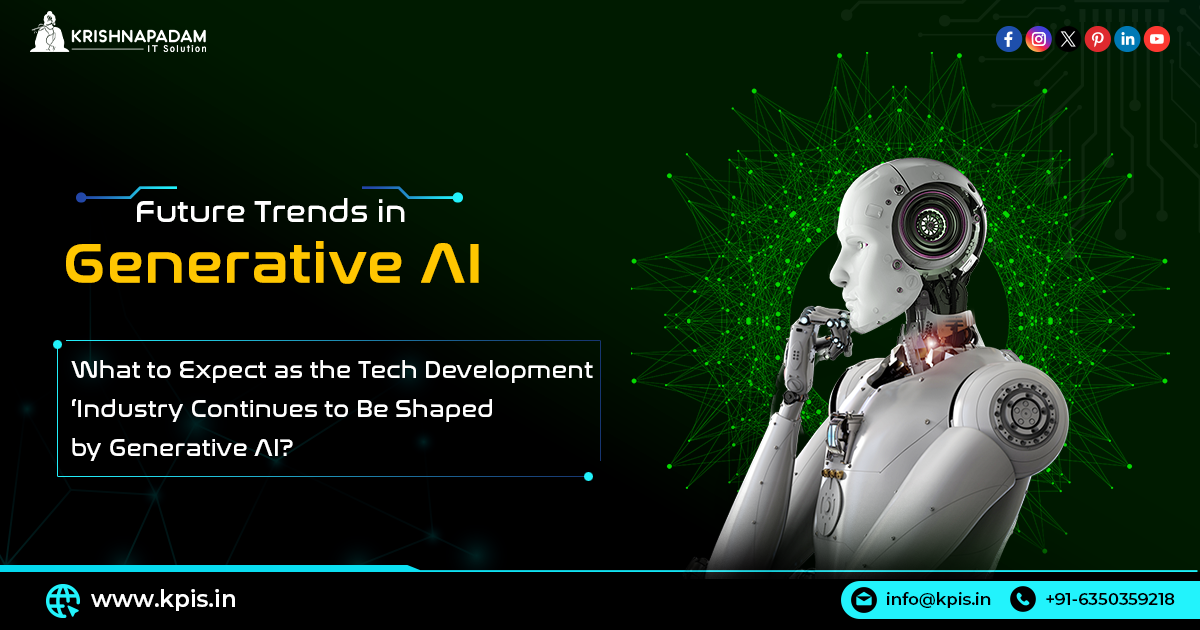
Expansion into New Industries
- It is expected that GenAI will extend new demands, including industry, education, manufacturing, and more. AI-driven development platforms have the potential to democratize software production in the IT industry. by enabling non-developers to create and implement apps without demanding extensive technical knowledge.
Human-Centered AI Design
- The Future GenAI Design With an emphasis on inclusivity and collaboration, ensure that AI supports people rather than replaces them. It will entail creating AI systems that comprehend and align human values, resulting in the use of AI that is more morally and responsibly applied.
Progress in AI Multimodal
- Tech development will see new opportunities due to multimodal AI, which processes and generates data across several modalities (text, image, sound, etc.). Imagine an AI system that can seamlessly switch between developing code, creating interfaces, and even possessing music—all based on a single prompt.
Enhanced Trust and Interpretability
- Transparency and trust will be more and more vital when AI is used in tech development processes. To help developers comprehend decision-making processes and ensure that AI is used safely and ethically, AI systems will need to become more interpretable.
What Are Some Famous GenAI Applications?
In 2025, Generative AI (GenAI) applications are expect to have evolve significantly, with numerous innovative tools impacting various industries. Whether it’s creating content, improving healthcare, or enhancing user experiences, GenAI applications are shaping the future of many industries. In this Comprehensive Guide to GenAI for 2025, here are some of the famous GenAI applications:
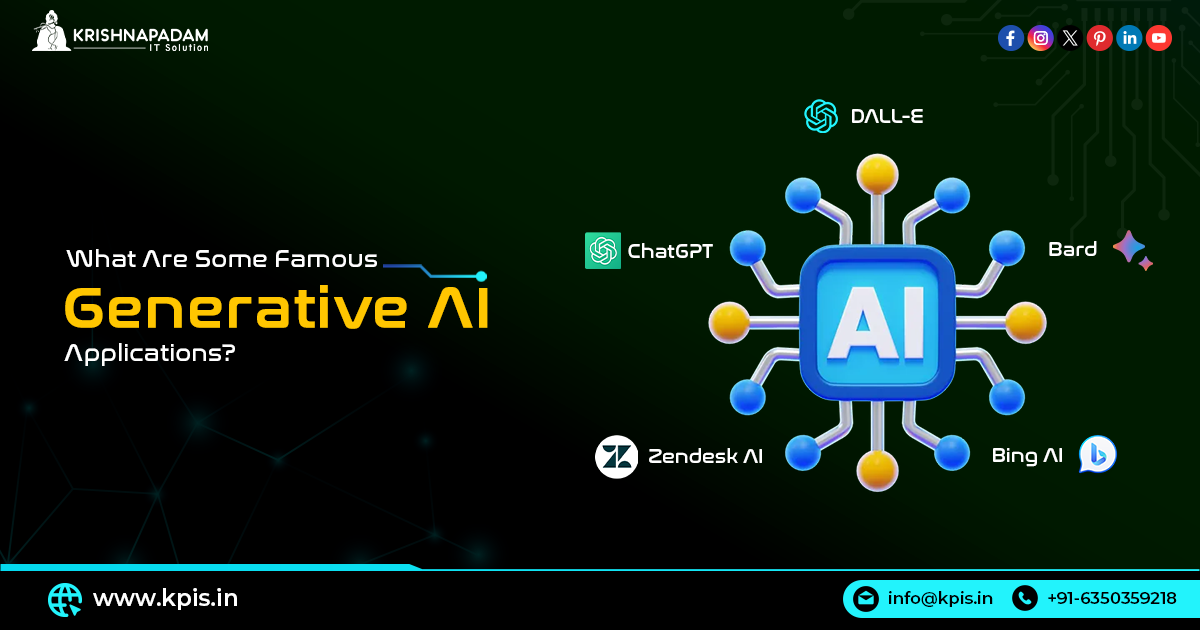
- ChatGPT (OpenAI)
A conversational AI model capable of generating human-like text responses. It’s utilize in customer service, content creation, and virtual assistants, making it highly versatile in various applications. - Jasper
AI-driven content generation tool designed for marketers and content creators, helping them produce high-quality written content like blog posts, ad copy, and social media text quickly and efficiently. - DALL·E (OpenAI)
A generative model that creates images from textual descriptions, enabling designers, artists, and creators to generate unique visuals and graphics by simply describing them in words. -
Bard (Google)
Google’s conversational AI system designed to provide detailed and contextually aware answers to users’ queries. It focuses on delivering information with a natural, human-like flow and integrates deeply with Google Search.
- Bing AI (Microsoft)
Powered by OpenAI’s GPT technology, Bing AI is a search engine enhancement that delivers AI-generated summaries, answers, and interactive dialogues, making search results more intuitive and informative. - Zendask AI
A customer service and support platform powered by AI. Zendask AI uses natural language processing to automatically respond to customer queries, offer solutions, and streamline customer support processes, improving efficiency and user satisfaction. - Synthesia
An AI-based video creation tool that generates realistic human avatars and converts text into video, primarily used for corporate training, marketing, and educational purposes. - Reface
Deepfake technology that allows users to swap faces in images or videos. It’s popular for entertainment, social media posts, and personalized video content.
The Future of AI with leading GenAI App Development Company
In today’s fast-paced digital age, businesses must keep ahead of the curve to succeed. KPIS A top-notch Generative AI Development Company offers cutting-edge solutions that enable businesses to automate and scale content creation through AI-driven models. By leveraging advanced algorithms like GANs and neural networks, we deliver powerful tools for generating unique images, text, and other digital assets tailored to various industries. These AI solutions streamline creative processes, boost productivity, and open new possibilities for innovation. With a focus on customization and efficiency, we ensures that its generative AI development services are build to meet the specific needs of each client. Our Generative AI Development solutions can help you:
- Automate routine tasks and focus on high-value activities
- Gain valuable insights from large datasets
- Enhance customer experiences and improve loyalty
Hire On-Demand AI App Developers with KPIS Pvt. Ltd.
Hire our skilled AI developers and experience the transformative power of artificial intelligence. Our experts are well-versed in cutting-edge techniques such as deep learning, natural language processing, computer vision, and reinforcement learning. From predictive analytics and chatbots to image recognition and autonomous systems, our developers have the technical expertise to tackle even the most complex AI challenges. With a deep understanding of algorithms, data modeling, and optimization techniques, our team ensures that your AI implementation is efficient, accurate, and aligned with your strategic goals.
Conclusion
GenAI is not just a technological trend. It is a revolution that has the potential to redefine the direction of technological improvement. Leveraging cutting-edge AI and ML algorithms, natural language processing frameworks, we specialize in crafting bespoke AI-driven applications and intelligent software systems. Our expertise extends across a spectrum of AI development services like predictive analytics, computer vision, deep learning model development, chatbot, chatgpt, etc. We are recognized as a leading AI app development company in India with our proven track record of success and a commitment to excellence.
Are you ready to develop your own Generative AI solution? as you read this Comprehensive Guide to GenAI for 2025, don’t wait to unlock the potential of Generative AI for your business. Get started today!

